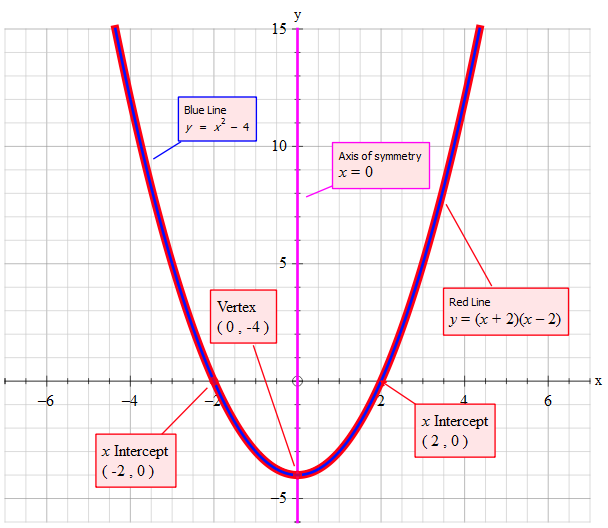How do you tell whether the graph opens up or down, find the vertex, and find the axis of symmetry of #y=(x+2)(x-2)#?
2 Answers
Seee explanation.
Explanation:
If a quadratic function is given in such form then:
- Its zeroes are
#2# and#-2# - The axis of symetry can be calculated as the mean of the zeros:
#p=(x_1+x_2)/2=0# , so the axis is#x=0# - The vertex can be calculated as
#q=f(0)=(0+2)(0-2)=-4# , so#V=(0,-4)# - If the graph is given in such form then to check if it opens up or down you check if the expressions in brackets are multiplied by a positive or negative constant.
If the constant is positice (as here) the graph opens up, if it is negative, the graph opens down.
Opens up
Axis of symmetry is
Vertex
Explanation:
If you multiply out the brackets the first term is
The number in front (not shown) is +1
So as the
Using your words: it opens up
The whole thing multiplied out is
~~~~~~~~~~~~~~~~~~~~~~~~~~~~~~~~~~
The given for of
Set
There are 2 condition for
condition 1:
condition 2:
The mid point is:
So the axis of symmetry is
~~~~~~~~~~~~~~~~~~~~~~~~~~~~~~~~~~~~~~~~~~
The
To find
Vertex


